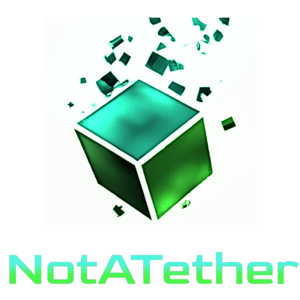JPEG (Joint Photographic Experts Group) is a widely used file format for digital images. It is a lossy compression algorithm, which means that it achieves high compression rates by discarding some image data. This article will provide a brief overview of the JPEG format and its characteristics.
History and Development
The JPEG format was developed by the Joint Photographic Experts Group, a committee of the International Organization for Standardization (ISO) and the International Electrotechnical Commission (IEC). The first version of the JPEG standard was published in 1992, and it has since undergone several revisions.
The JPEG compression algorithm was designed to address the need for a standardized image compression format that would be suitable for storing and transmitting digital photographs. The goal was to create a format that would reduce the size of digital images without sacrificing too much image quality.
Compression Algorithm
JPEG compression works by dividing an image into 8×8 blocks of pixels. These blocks are then transformed using a mathematical process called the Discrete Cosine Transform (DCT), which converts the pixel values into frequency coefficients. The DCT process separates the image data into high and low-frequency components. The high-frequency components contain the details of the image, while the low-frequency components contain the overall color and brightness information.
After the DCT process, the high-frequency components are quantized, which means that they are divided by a set of pre-defined values to reduce their resolution. This is the step that causes the loss of some image data. The quantized high-frequency components are then compressed using a variant of the Huffman coding algorithm, which assigns shorter codes to the more common values.
The low-frequency components are not quantized and are also compressed using the Huffman coding algorithm. The resulting compressed image data is stored in a file with the .jpg extension.
Image Quality and Compression
The quality of a JPEG image is determined by the amount of compression applied to the image data. Higher compression rates result in smaller file sizes but also in a greater loss of image data. The compression rate can be adjusted to achieve a balance between file size and image quality.
JPEG images are suitable for photographs and other images that contain a lot of detail and color variations. However, they are not well-suited for images with sharp edges or text, as these types of images can suffer from artifacts such as blockiness and blurring.
Compression Rate
Compression rates are an important aspect of the JPEG format and affect both the quality of the image and the file size. The compression rate determines the level of compression applied to the image data and can be adjusted to balance image quality and file size.
JPEG compression rates are typically measured as a percentage of the original image size. Higher compression rates result in smaller file sizes but also in a greater loss of image data. Lower compression rates result in larger file sizes but also in higher image quality with less loss of detail.
A compression rate of 100% means that the image is uncompressed and stored in the highest possible quality. This results in a very large file size and is typically used for archival purposes or when image quality is of the utmost importance.
On the other end of the spectrum, a compression rate of 0% means that the image is compressed to the maximum extent possible. This results in the smallest possible file size but also in a significant loss of image data and quality.
Most JPEG images use a compression rate between 70% and 95%, which provides a balance between file size and image quality. The optimal compression rate will depend on the specific image and its intended use.
It is important to note that each time a JPEG image is edited and saved, some image data is lost due to the compression process. This loss of data is cumulative, and repeated editing and saving of the image can result in a significant loss of image quality over time.
Cumulative Quality Loss
One potential downside of using the JPEG format is that each time an image is edited and saved, some image data is lost due to the compression process. This loss of data is cumulative, and repeated editing and saving of the image can result in a significant loss of image quality over time.
This is because JPEG is a lossy compression algorithm, and some image data is discarded during the compression process. When an image is edited and saved in JPEG format, it is compressed again, resulting in further loss of image data.
The loss of image quality is most noticeable in areas of the image with a lot of detail or sharp edges, such as text or logos. These areas can develop artifacts such as blurring or blockiness after repeated editing and saving.
To mitigate this issue, it is recommended to work with the original, uncompressed version of the image whenever possible, and to save a copy in JPEG format for distribution or sharing purposes. Additionally, using a lower compression rate when saving the JPEG file can help to preserve image quality, although this will result in a larger file size.
Non-destructive Editing
While JPEG is a lossy compression format and can result in cumulative loss of image quality over time after repeated editing and saving, there are techniques that can be used to mitigate this issue.
One such technique is to use non-destructive editing tools when working with JPEG images. Non-destructive editing allows you to make changes to an image without permanently altering the original file, and can help to preserve image quality by avoiding the need for repeated compression and decompression.
Non-destructive editing tools work by creating a separate file that stores the changes you make to an image. This file is usually much smaller than the original image and can be saved in a lossless format such as TIFF or PNG to avoid further loss of image data.
When you are finished editing the image, you can export it as a new JPEG file with a compression rate that balances image quality and file size. By using non-destructive editing techniques, you can minimize the loss of image quality that can result from repeated compression and decompression of JPEG files.
In addition to non-destructive editing, there are other techniques you can use to preserve image quality when working with JPEG files. One such technique is to avoid making unnecessary edits or adjustments to the image, as each change can result in further loss of image data.
Another technique is to use high-quality software and tools for editing and saving JPEG files. Some image editing software is better than others at preserving image quality during the compression process, and it is important to choose a tool that is optimized for working with JPEG images.
File Structure
A JPG file is structured as a binary file consisting of a sequence of bytes that are used to represent the compressed image data and associated metadata. The file is divided into several different sections, each of which contains specific information about the image.
Here is a detailed breakdown of the structure of a JPG file:

- One SOI (Start of Image) Marker
- One or more APP (Application) Markers
- One DQT (Define Quantization Table) Marker
- One SOF (Start of Frame) Marker
- One DHT (Define Huffman Table) Marker
- One SOS (Start of Scan) Marker
- Image Data
- One (End of Image) EOI Marker
SOI (Start of Image) Marker
The Start of Image marker is a two-byte marker that indicates the beginning of a JPG file. It is represented by the hexadecimal values FF D8.
APP (Application) Markers
The Application markers are used to store metadata and other information about the image. There are several different APP markers, each of which contains a different type of information. For example, the APP0 marker is used to store information about the JFIF (JPEG File Interchange Format) standard.
DQT (Define Quantization Table) Marker
The Define Quantization Table marker is used to define the quantization tables used during the compression process. Quantization tables are used to adjust the accuracy of the compression algorithm, and can have a significant impact on the quality of the compressed image.
SOF (Start of Frame) Marker
The Start of Frame marker is used to indicate the beginning of the compressed image data. There are several different SOF markers, each of which contains information about the size and format of the image.
DHT (Define Huffman Table) Marker
The Define Huffman Table marker is used to define the Huffman coding tables used during the compression process. Huffman coding is a lossless compression technique that is used to encode the image data into a more compact form.
SOS (Start of Scan) Marker
The Start of Scan marker is used to indicate the beginning of the compressed image data. It contains information about the image components, such as the number of components and their ordering.
Image Data
The compressed image data follows the SOS marker. This data is represented as a series of entropy-encoded values that are compressed using the Huffman coding tables defined in the DHT marker.
EOI (End of Image) Marker
The End of Image marker is a two-byte marker that indicates the end of a JPG file. It is represented by the hexadecimal values FF D9.
Are JPG and JPEG the same?
JPEG and JPG are two file extensions commonly used to represent images in the JPEG format. While they may appear to be different, they actually refer to the same file format and have no technical differences between them.
The term JPEG (Joint Photographic Experts Group) refers to the organization that developed the image compression standard in the early 1990s. The file extension “.jpg” was created as a shortened version of JPEG to conform to the 8.3 filename format used in older operating systems.
Today, both JPEG and JPG are widely used to represent the same image format, and there is no difference in the way the files are processed or compressed. In fact, most modern operating systems and image editing software can open and save files with either extension.
However, some websites or software may require one extension over the other for compatibility reasons. For example, some older cameras or devices may only recognize the “.jpg” extension, while some websites may require the use of “.jpeg” for compatibility with certain browsers.
Conclusion
JPEG is a widely used file format for digital images, thanks to its high compression rates and good image quality. However, it is important to note that JPEG is a lossy compression algorithm, and some image data is discarded during the compression process. As such, it is important to choose an appropriate compression rate to balance image quality and file size.

